Driverless or autonomous vehicles are all the rage at the moment. Traditional car manufacturers and new entrants such as Tesla and Google vie to bring autonomy to the masses. Agricultural vehicle-makers are no different with many showing concept vehicles and companies such as Case-New Holland and Kubota committed to production models.
These large, autonomous vehicles will be complex, sensor-laden and expensive, utilising the developing car technology and a lot more besides to ensure safety in the field.
However, there is another approach which seemed impractical just a short time ago.
Fendt’s unveiling of the Xaver mini-robot at this year’s Agritechnica, forces us to take the small working field robot more seriously.
Why driverless machines?
Autonomous working has the potential to reduce labour demand and because of accurate on-board guidance and control systems, autonomous vehicles also offer scope for more efficient field operation and for adopting precision agriculture approaches to crop management.
The potential introduction of mini-robots adds a new dimension: weight reduction which counters one of the greatest threats of modern machinery systems to sustainable production; soil compaction.
Categories
There are three broad categories of driverless machines for field work to date.
Single autonomous tractors: these are tractors of the size and working capacity that are in use today, but equipped with advanced guidance and control systems that allow full driverless operation. They need to be equipped with many layers of safety control systems to allow them to be worked in the field without in-cab supervision and to cover all eventualities and, indeed, it will be a challenge to achieve this level of safety.Master and slave vehicles: in this system, a manned tractor would lead the work of one or more driverless tractors/vehicles in the field. For example, a number of tractors cultivating could work in close proximity to each other in the field. The same level of safety and autonomy would have to be built into the slave tractor, but an operator would be in close proximity at all times; which may facilitate this system being accepted from a safety or insurance perspective.A swarm of mini-robots: in this case, instead of a single, large, heavy unit being used, the opportunity is taken to downsize to a large number of smaller self-driving units which impose a much lighter load on the soil.But there may be a fourth which you will see in the final paragraph.
The mini robot swarm is a concept that captured the imagination of university research units as it presented a great opportunity for developing, building and assessing autonomous robotics. While commercial prospects for these units would have seemed unlikely a couple of years ago, Fendt created a stir when it indicated its intention to develop the Fendt Xaver mini-robot for commercial production.
Fendt Xaver mini-robot
The Fendt Xaver mini-robot is small and looks unlikely as a field machine. Its key statistics are outlined below:
Each unit weighs about 50kg and produces less than 1hp (0,6kW) from its battery-powered electric drive system.It can work for two too three hours before needing a 30-minute charge.Being small and light reduces the need for multiple safety systems compared with full-size tractors.The robots are designed to work in swarms; delivered to the field by a trailer which houses the automatic charging unit.Its first application will be to precision-sow crops such as maize or sugar beet.With a working speed of up to 6km/h, a swarm of 15 robots would sow 2ha /hr. The low weight contributes to a tiny axle load, low ground pressure and no risk of soil compaction.A mini field robot of this type is not designed to transport harvested crop or to cultivate soil. In addition to its initial intended role of precision seeding, a mini robot could be developed to treat weeds and apply other inputs on a targeted basis to specific plants or areas of the field.
Xaver development
The Fendt Xaver is a product of a research project known as MARS, led by the University of Ulm in Germany. While there have been many similar projects in universities and institutes across the world, what is unique is AGCO/Fendt’s decision to take on the project since 2016. This, coupled with the stated objective of developing a robot swarm system that will compete with the output and price of a tractor mounted seeder, indicates that this system may indeed become commercial in years to come.
Decoupling labour
One advantage of driverless (or autonomous) tractors is the decoupling of machinery scale and size from labour efficiency. Economies of scale in machinery are primarily associated with labour-saving – bigger machines allow one man to get through the work quicker.
With autonomous vehicles, a large number of smaller vehicles could be considered without penalising labour costs. Why choose a larger number of smaller machines? The primary advantage is a reduction in soil structure damage which has become an everyday risk with modern machines. Despite their large tyres, modern machines pose a significant threat to the soil with their huge axle loads and, in Ireland, our often wet conditions exacerbate that risk.
A different approach
So will the machines of the future be similar to the Fendt Xaver, weighing in at just 50kg but with limited task capability, or will they be larger? And how large?
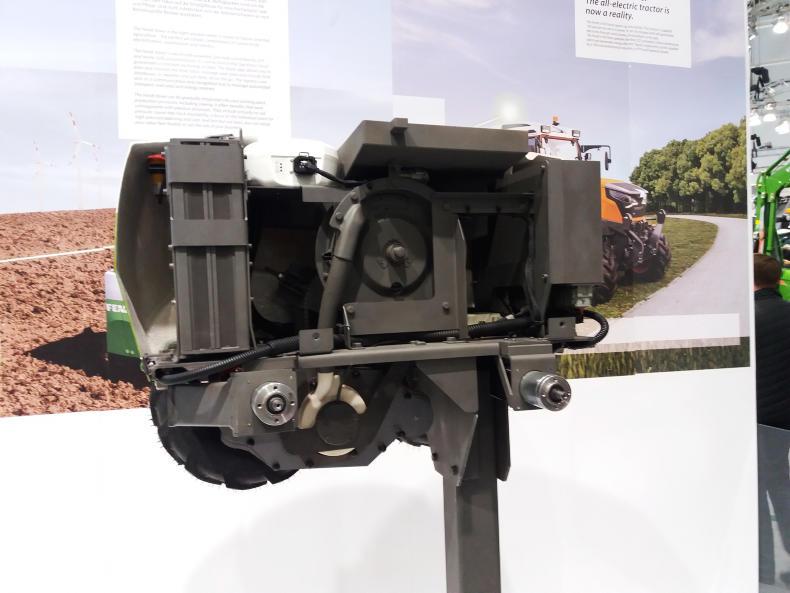
Well, this author thinks a good place to start may be with the specification of the most efficient tractor of them all – the Ferguson 20, which weighed 1.2t with a power output of just 20kW (26hp). It was light, caused little soil damage, but had sufficient size and stability to provide a stable platform for field operations including cultivations. So, instead of the now ubiquitous 150hp to 200hp tractors carrying out field tasks, how about five or six small light 30hp units with similarly light implements doing the same work? If we can produce safe, inexpensive autonomous control systems, this size of tractor has a lot going for it. An exciting future awaits us.
Read more
Case and Microsoft launch virtual mechanics
Big mowers flex their muscles
Novel tractor road safety devices hit the Irish market
Driverless or autonomous vehicles are all the rage at the moment. Traditional car manufacturers and new entrants such as Tesla and Google vie to bring autonomy to the masses. Agricultural vehicle-makers are no different with many showing concept vehicles and companies such as Case-New Holland and Kubota committed to production models.
These large, autonomous vehicles will be complex, sensor-laden and expensive, utilising the developing car technology and a lot more besides to ensure safety in the field.
However, there is another approach which seemed impractical just a short time ago.
Fendt’s unveiling of the Xaver mini-robot at this year’s Agritechnica, forces us to take the small working field robot more seriously.
Why driverless machines?
Autonomous working has the potential to reduce labour demand and because of accurate on-board guidance and control systems, autonomous vehicles also offer scope for more efficient field operation and for adopting precision agriculture approaches to crop management.
The potential introduction of mini-robots adds a new dimension: weight reduction which counters one of the greatest threats of modern machinery systems to sustainable production; soil compaction.
Categories
There are three broad categories of driverless machines for field work to date.
Single autonomous tractors: these are tractors of the size and working capacity that are in use today, but equipped with advanced guidance and control systems that allow full driverless operation. They need to be equipped with many layers of safety control systems to allow them to be worked in the field without in-cab supervision and to cover all eventualities and, indeed, it will be a challenge to achieve this level of safety.Master and slave vehicles: in this system, a manned tractor would lead the work of one or more driverless tractors/vehicles in the field. For example, a number of tractors cultivating could work in close proximity to each other in the field. The same level of safety and autonomy would have to be built into the slave tractor, but an operator would be in close proximity at all times; which may facilitate this system being accepted from a safety or insurance perspective.A swarm of mini-robots: in this case, instead of a single, large, heavy unit being used, the opportunity is taken to downsize to a large number of smaller self-driving units which impose a much lighter load on the soil.But there may be a fourth which you will see in the final paragraph.
The mini robot swarm is a concept that captured the imagination of university research units as it presented a great opportunity for developing, building and assessing autonomous robotics. While commercial prospects for these units would have seemed unlikely a couple of years ago, Fendt created a stir when it indicated its intention to develop the Fendt Xaver mini-robot for commercial production.
Fendt Xaver mini-robot
The Fendt Xaver mini-robot is small and looks unlikely as a field machine. Its key statistics are outlined below:
Each unit weighs about 50kg and produces less than 1hp (0,6kW) from its battery-powered electric drive system.It can work for two too three hours before needing a 30-minute charge.Being small and light reduces the need for multiple safety systems compared with full-size tractors.The robots are designed to work in swarms; delivered to the field by a trailer which houses the automatic charging unit.Its first application will be to precision-sow crops such as maize or sugar beet.With a working speed of up to 6km/h, a swarm of 15 robots would sow 2ha /hr. The low weight contributes to a tiny axle load, low ground pressure and no risk of soil compaction.A mini field robot of this type is not designed to transport harvested crop or to cultivate soil. In addition to its initial intended role of precision seeding, a mini robot could be developed to treat weeds and apply other inputs on a targeted basis to specific plants or areas of the field.
Xaver development
The Fendt Xaver is a product of a research project known as MARS, led by the University of Ulm in Germany. While there have been many similar projects in universities and institutes across the world, what is unique is AGCO/Fendt’s decision to take on the project since 2016. This, coupled with the stated objective of developing a robot swarm system that will compete with the output and price of a tractor mounted seeder, indicates that this system may indeed become commercial in years to come.
Decoupling labour
One advantage of driverless (or autonomous) tractors is the decoupling of machinery scale and size from labour efficiency. Economies of scale in machinery are primarily associated with labour-saving – bigger machines allow one man to get through the work quicker.
With autonomous vehicles, a large number of smaller vehicles could be considered without penalising labour costs. Why choose a larger number of smaller machines? The primary advantage is a reduction in soil structure damage which has become an everyday risk with modern machines. Despite their large tyres, modern machines pose a significant threat to the soil with their huge axle loads and, in Ireland, our often wet conditions exacerbate that risk.
A different approach
So will the machines of the future be similar to the Fendt Xaver, weighing in at just 50kg but with limited task capability, or will they be larger? And how large?

Well, this author thinks a good place to start may be with the specification of the most efficient tractor of them all – the Ferguson 20, which weighed 1.2t with a power output of just 20kW (26hp). It was light, caused little soil damage, but had sufficient size and stability to provide a stable platform for field operations including cultivations. So, instead of the now ubiquitous 150hp to 200hp tractors carrying out field tasks, how about five or six small light 30hp units with similarly light implements doing the same work? If we can produce safe, inexpensive autonomous control systems, this size of tractor has a lot going for it. An exciting future awaits us.
Read more
Case and Microsoft launch virtual mechanics
Big mowers flex their muscles
Novel tractor road safety devices hit the Irish market


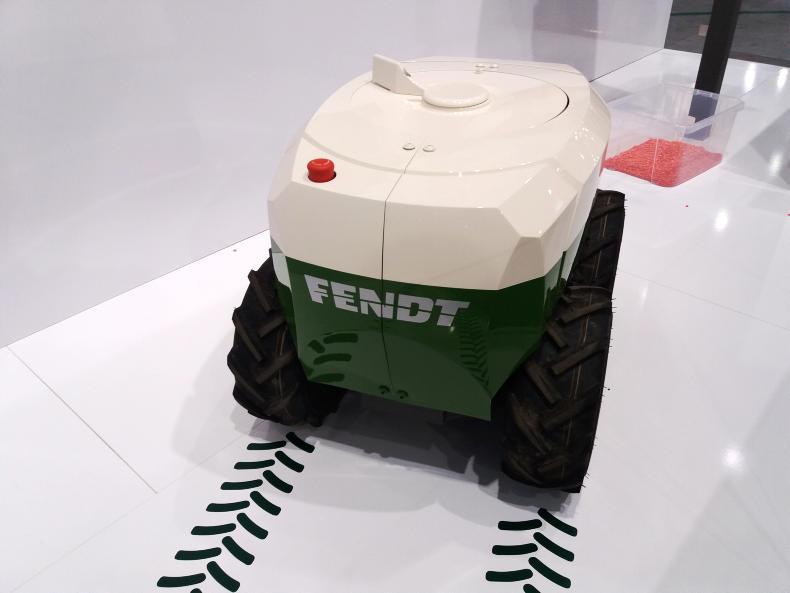




 This is a subscriber-only article
This is a subscriber-only article







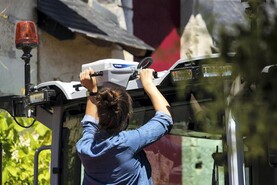
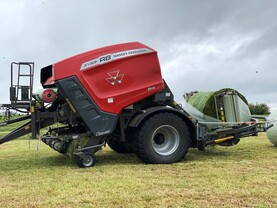
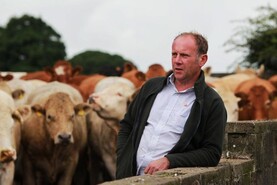

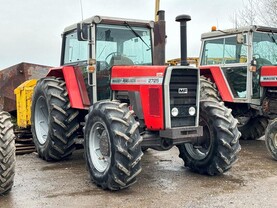
SHARING OPTIONS: